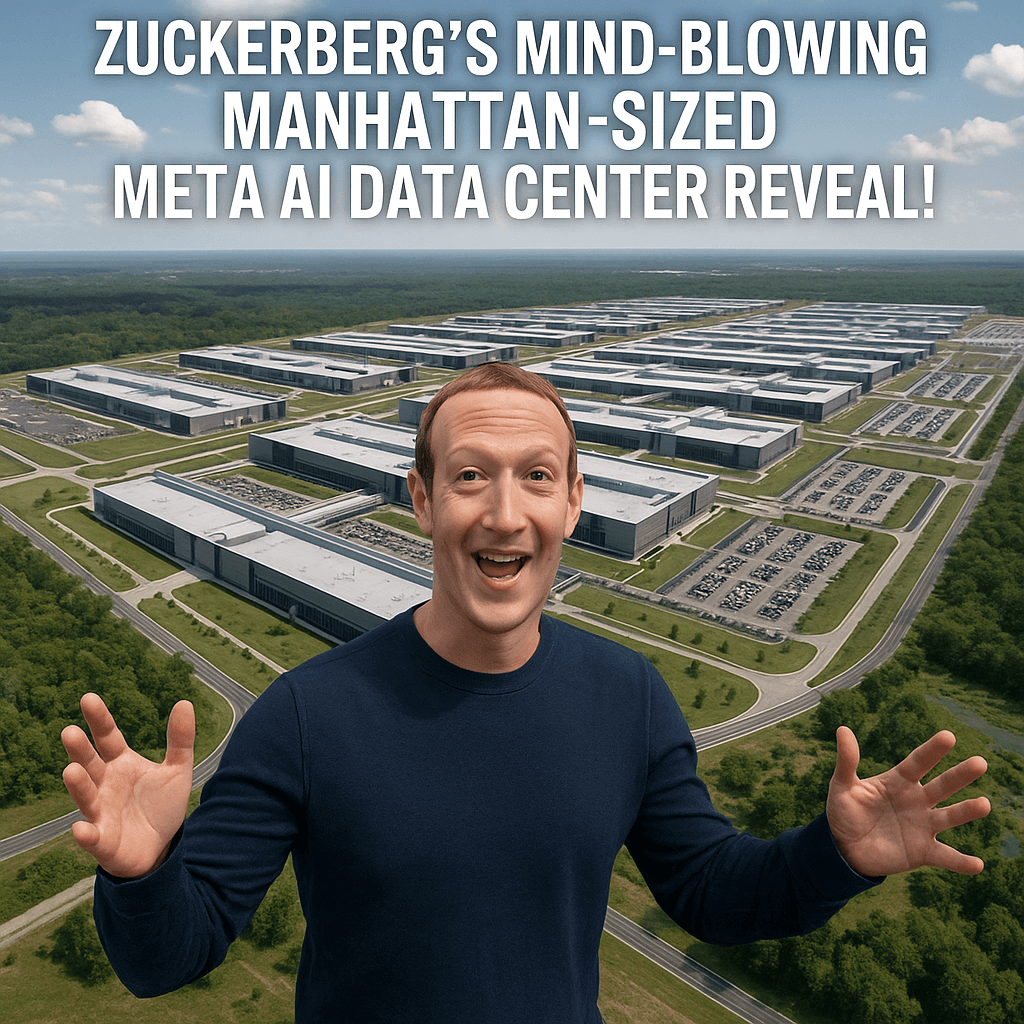A Monumental Vision: Meta’s Manhattan-Sized Data Center
Mark Zuckerberg’s recent announcement about building a data center the size of Manhattan signals an unprecedented leap in Meta’s AI ambitions. This isn’t just another infrastructure project; it’s a bold statement on how Meta plans to power the next generation of artificial intelligence, transforming the tech landscape and possibly the world as we know it.
The sheer scale of the proposed data center is staggering. Manhattan covers approximately 22.7 square miles, and while Zuckerberg may have used this figure somewhat figuratively, the intention is clear: Meta is gearing up to operate at a scale never seen before in the AI industry.
But what exactly does this mean? Why does Meta need such vast computational muscle, and what impact will this have on AI development and beyond? Let’s dive into the core reasons behind this colossal project.
Why Scale Matters: The Role of Data Centers in AI
AI’s voracious appetite for data and compute power makes data centers the backbone of innovation in this space. Large-scale language models, image generation tools, and real-time interactive AI services all require massive computational resources — measured in exaflops and powered by thousands of GPUs working simultaneously.
Traditional data centers are already enormous, but Meta’s vision to expand into Manhattan-sized domains reflects the exponential growth of AI workloads.
The key factors driving this need are:
- Model Complexity: AI models like GPT and Meta’s own LLaMA models have billions to trillions of parameters, demanding scalable compute to train and run effectively.
- Data Volume: Vast amounts of high-quality data are needed to train and fine-tune models for accuracy, safety, and usability.
- Real-Time Interaction: Consumers expect instantly responsive AI-powered features across social platforms, metaverse applications, and smart devices.
- Energy Efficiency: Large, specially designed data centers allow better cooling and power management, lowering the carbon footprint per computation unit.
Meta’s massive data center push targets all these challenges simultaneously, making it a foundation for more advanced, accessible AI tools.
Inside the Tech: What Makes a Data Center of This Scale Crucial for Meta
Infrastructure at this scale is not just bigger; it’s smarter. Meta is investing in next-gen server architectures, AI-optimized chips, and renewable energy integration. A Manhattan-sized facility could incorporate:
- Distributed Computing Networks: Seamlessly connecting thousands of machines to share workloads efficiently.
- Advanced Cooling Techniques: Including liquid cooling and AI-driven temperature regulation to minimize overheating and energy waste.
- Renewable Energy Sources: Utilizing solar, wind, and even emerging technologies to power operations sustainably.
- Edge Computing Extensions: Bringing compute closer to users to reduce latency in applications like the Metaverse and real-time AI chatbots.
Additionally, Meta’s research teams continuously innovate in hardware/software co-design to squeeze maximum performance and efficiency from every server.
Industry Impact: What This Means for AI, Business, and Society
Meta’s audacious data center plans may reshape the AI ecosystem dramatically. Here’s how:
- Accelerating AI Development: With more powerful and efficient compute, research breakthroughs can happen faster, enabling models with better understanding, creativity, and ethical grounding.
- Democratizing AI Access: As capacity grows, Meta can offer AI-powered tools to smaller companies, developers, and even individual users, expanding AI’s reach beyond elite labs.
- Boosting Metaverse Realities: The compute power will help create immersive virtual worlds with intelligent agents, real-time physics, and dynamic social interactions.
- Economic Ripple Effects: Large-scale infrastructure projects bring jobs, innovation hubs, and new business opportunities around data centers, impacting local and global economies.
- Environmental Considerations: Meta’s commitment to sustainability within this mega-project will be closely watched, setting precedents for green computing at scale.
The infrastructure push also raises critical questions about data privacy, energy consumption, and AI governance that will shape future regulations and corporate responsibility standards.
What’s Next? The Future of Meta and AI Powerhouses
This Manhattan-sized data center is just a stepping stone in a larger AI race. Other tech giants are rapidly expanding their compute capabilities, but Meta’s scale and integration across social platforms and the Metaverse give it a unique edge.
The company is likely to continue innovating in AI hardware, pushing boundaries on model scale and user experience. Meanwhile, collaboration with governments and environmental groups will be crucial to balance growth with sustainability.
For tech enthusiasts, business leaders, and students alike, watching Meta’s massive infrastructure investment unfold offers a glimpse into how AI’s future is being built—literally from the ground up.
In a world increasingly shaped by intelligent machines, Meta’s Manhattan-sized data center symbolizes a new era where scale, speed, and sustainability drive innovation, creativity, and connection on a breathtaking scale.

